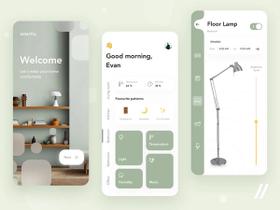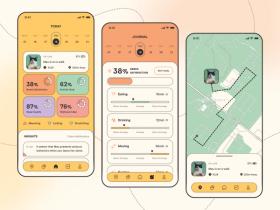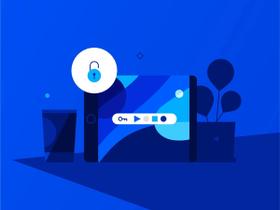IoT App Development Cost: A Case Study-Based Roadmap
Published: April 16, 2025
19 min read
In this article, you'll learn:
1
❓ What Influences IoT Development Cost?
2
🔍 What are the So-Called “Hidden Costs” for IoT Development?
3
📉 How to Safely Reduce IoT App Development Cost and Avoid Money Waste?
4
🔑 Our Expertise in Determining Development Costs for IoT
5
💡 Takeaways
The IoT project cost has always been quite tricky to accurate estimate due to the complexity of delivering a connected solution through Internet of Things implementations. It can involve many different stages within a typical software development cycle like researching connection protocols or establishing Bluetooth Low Energy (BLE) or WiFi connectivity. Each of these “extra” stages adds up to the overall project costs and may be not very clear when you’re just beginning the IoT integration.
However, at the highest level, we can break down the IoT development cost structure for IoT integrations into the following categories:
- Production costs. They consist of the finances required to create IoT hardware, such as modules. Both hardware and software integration and factory costs are included in this category.
- Development costs. These are the most interesting ones for us. They include aspects that are vital for solution delivery, such as fees for custom IoT development or researching data protocols like BLE integrations.
- Operating costs. These costs appear when the IoT solution starts to function. For example, finances spent on software licenses, wireless communication protocols, and establishing cloud hosting are standing as 'operating'.
Based on this, an IoT cost estimate for app development can range from $28,450 to $41,450. Since our team specializes in IoT mobile app development, in this article we will focus on IoT app development cost in particular.
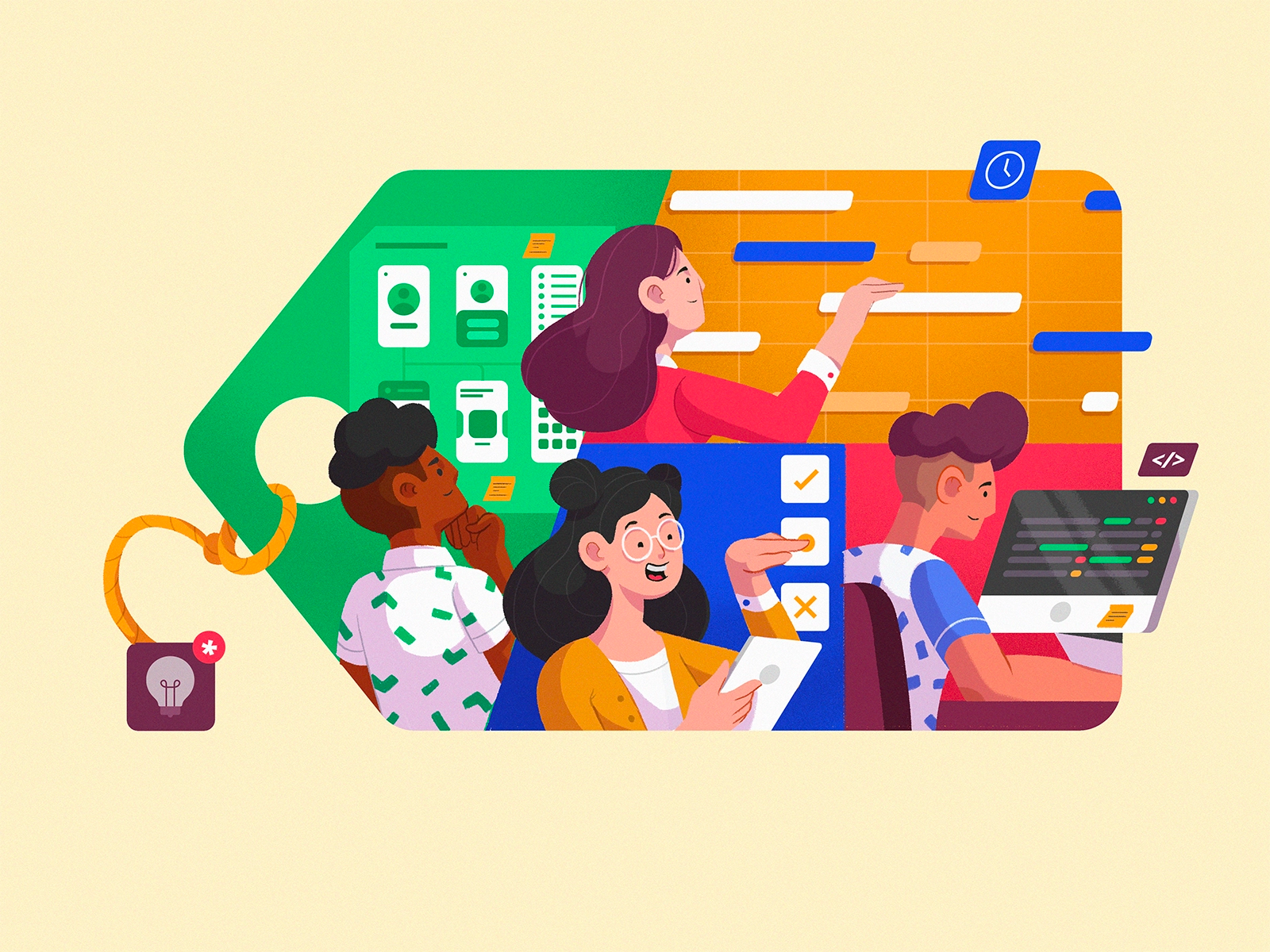
IoT devices always require specific mobile applications IoT based applications that prioritize IoT connectivity and interaction.
(image by Lily)
Various IoT solutions (whether custom or ready-made solutions) require custom software components and a tailored approach, making it almost impossible to present a precise estimate as a generalized one. The custom approach supposes creating a unique software solution, the uniqueness of which will significantly impact the total IoT development cost.
❓ What Influences IoT Development Cost?
IoT app development cost for enterprises is never fixed, as it changes under specific circumstances. Let’s take a closer look at aspects that usually influence the costs of delivering a custom IoT solution.
Targeted platforms
IoT software development cost will vary, often influenced by IoT trends, depending on the desired platforms for the project. Whatever your business goals are, you pick the most suitable platform among desktop, web, and mobile to build an IoT solution.
Looking at the IoT development cost in more detail, an Android IoT application will cost more due to the extensive testing required for a highly fragmented device landscape.
For Android app, the cost required for testing can account for up to 25% of the development budget due to the wide variety of screen sizes, operating system versions, and device features. iOS development, while often higher in upfront costs, requires less ongoing device-specific testing, which reduces long-term maintenance costs. At the same time, cross-platform development can help you save approximately 30-40% of your time and money.
Android Development Cost | iOS Development Cost | React Native Development Cost |
|---|---|---|
$25,000 to $100,000 | $20,000 to $90,000 | $30,000 to $120,000 |
We at Stormotion create Internet of Things software with the amazing React Native framework. It gives us an opportunity to deliver products for several platforms (iOS, Android) at the same time lowering Time-to-Market and expenses. This level of efficiency we can reach as React Native allows us to reuse different pieces of code for those other platforms.
To manage IoT development costs effectively, we recommend starting by launching your product on the platform most preferred by your customers. Later on, you may launch the solution on the other platform, if it becomes necessary.
In turn, React Native makes the IoT app development process for both mobile platforms less complicated. Thus, you don’t have to seek assistance from different experts to integrate a new OS, when it all can be done by one 😉
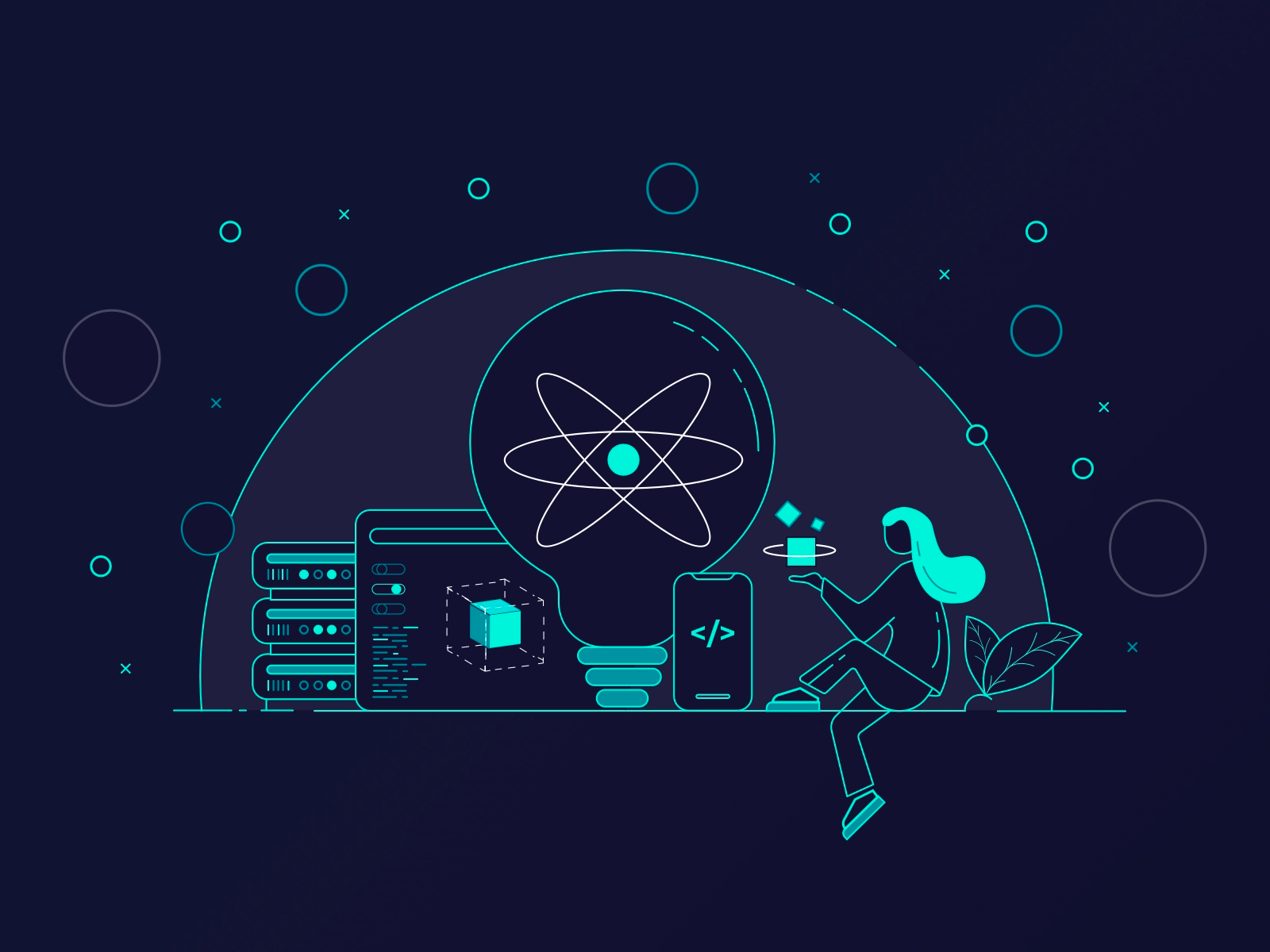
When considering how much it costs to develop an IoT app, development services play a crucial role in setting up an IoT ecosystem.
(image by Tomasz Czyżkowski)
Moreover, the adoption of React Native allows reusing some parts of the mobile code for web platforms, optimizing your business model by reducing costs and making it an efficient choice to develop a smart home application. Thus, if you don’t plan on focusing solely on one platform, we’d recommend you consider this framework as the way to cut IoT application development costs without the decrease in quality.
Software Features
As the quality and quantity of your software’s features considerably impact the IoT software development cost, we recommend building a clear vision of what is needed and what is desired. In other words, think of starting with an MVP — Minimum Viable Product.
Prioritize the functionalities, such as real-time analytics, and features you'd like to have in your project by dividing them into the vital ones and the ones that aren’t so necessary at the first stage. This will help you to understand how much your project’s core costs and what the cost of further development stages is. This approach will also help you determine how much it costs to build an IoT application by cutting off non-essential features at the start, decreasing the overall project cost.
Basic IoT Features (Data Collection, Basic Control Panel) | Advanced Features (Real-time Analytics, AI/ML Integrations, Enhanced Data Analysis) |
|---|---|
$10,000 to $50,000 | $50,000 to $150,000 |
Learn more about an MVP here:
📝 Start with essential features and introduce advanced functionality later. For instance, prioritize real-time monitoring over predictive maintenance and analytics for an MVP.
UI/UX interfaces
In our opinion, one of the most valuable aspects of IoT software app design is user-friendliness, especially in the front end to ensure intuitive navigation. The easier it’s to use the app — the better user engagement and retention rate you may expect. The complexity of your project’s design can significantly influence the cost of IoT mobile application development, especially in specific fields like smart agriculture IoT, where industrial designers often play a key role. In the IoT industry, we recommend sticking to non-complex and intuitive app design decisions in order not to overload the user's experience along with the project’s budget.
We’d like to list several inner aspects that affect IoT product development costs and speed up the delivery at the design stages:
-
General practices. It’s quite common to observe the tendencies and decisions that are used among the companies of your segment. If there’s a common design decision found in different companion apps, there’s no need to complicate the development by trying to invent something extraordinary. The main advice if you prioritize lower costs and faster development — stick with simplicity.
-
Responsive app design. On one hand, it’s a significant challenge for designers to predict and adapt your project’s interface to every possible smart appliance, however, it may create excessive spending that isn’t so essential from the start. Our advice is to determine several main devices at the design stage and focus on development, as you can always adapt to new ones in the future when it becomes necessary.
-
Existing libraries/decisions. We recommend implementing more already existing libraries and features that perform essential functions to lower your expenditures. If your goal is to make a good product without spending tremendous amounts of money — don’t overlook taking existing design solutions and prototyping tools into consideration. It’s always cheaper to give up a few potential features than to design everything from scratch.
As you have already realized, user-friendliness and design complexity are crucial for IoT apps, especially for industries like smart agriculture or healthcare, which often demand custom solutions.
Basic Design Costs (Minimalistic, Pre-built Templates) | Advanced Design Costs (Custom, Highly Interactive UI) | Responsive Design Costs |
|---|---|---|
$5,000 to $15,000 | $15,000 to $50,000 | $10,000 to $30,000 |
📝 Focus on a responsive design for only a few core devices initially. Adapting to additional devices can be scheduled for future iterations.
Development Practices and Tools
The choice of development tools and practices as an IoT development strategy largely determines the overall IoT development cost and time. This indicates that utilizing effective methods and resources, including including secure communication protocols and robust encryption protocols, can lead to tremendous time, space, and cost savings for organizations.
Using pre-built libraries speeds up standard operations in the backend, allowing you to synchronize the cloud in real-time, “connect” messaging protocols (for example, the MQ Telemetry Transport protocol), or integrate embedded software for secure data handling. This can reduce costs by 15–20% while ensuring data privacy and secure operations. For example, using customized IoT connectivity solutions from scratch ensures proper handling of sensitive data using the AWS IoT SDK to connect devices is more cost-effective than developing other connectivity solutions from scratch.
Maintenance and Scaling
For specific applications such as radiation monitoring devices, maintenance includes updates, bug fixes, adaptation to operating system changes, automating processes, and other ongoing costs to work with future devices. Annual maintenance costs average about 15-25% of the initial IoT development cost. For example, the cost of developing an IoT application is more than $100,000, and the company must allocate between $15,000 and $25,000 annually to maintain it.
A significant portion of these costs is often dedicated to mitigating IoT security issues, such as patching vulnerabilities, addressing firmware exploits, and ensuring compliance with evolving security standards.
Any IoT solution, including those related to EV charging station app development, may require a new level of scaling when the number of users increases or new devices are added or when managing multiple devices. Including new platforms - for example, a web version of an existing mobile application - costs between $10,000 and $50,000. Supporting new IoT devices in this case costs from $5,000 to $20,000 per device, depending on the integration required.
Integration with IoT Ecosystem
IoT device integration and ecosystem compatibility are critical as Internet of Things (IoT) solutions do not exist in isolation, as IoT solutions can and often do require seamless integration with other IoT solutions. Interoperability with existing IoT devices, systems, and environments is paramount, especially when meeting industry-specific standards, but comes with costs associated with complexity.
These complexities are especially relevant when estimating the cost to build a healthcare app, as it requires seamless integration with existing medical IoT systems.
A well-implemented Android BLE communication setup ensures seamless interoperability between IoT devices, enabling smooth data transfer for applications such as fitness trackers, smart locks, and industrial monitoring systems.
Simple Device Integration - basic devices with standard SDKs (e.g., Google Home or Amazon Alexa) | Complex Ecosystem Integration - multiple device types or smart home hubs |
|---|---|
$5,000 to $20,000 | $30,000 to $100,000 |
Developing a profitable IoT application is not a one-step procedure. The IoT project cost is determined by the chosen platform, connectivity expenses, additional features, UI/UX design, and the possibility of expansion. That is why it is quite possible to control costs when a business focuses on MVPs, uses frameworks like React Native, and relies on existing libraries.
🔍 What are the So-Called “Hidden Costs” for IoT Development?
Considering IoT software creation with the help of a Tech Team, you always stick to the numbers provided by the specialists you hire. However, this number doesn’t always include expenditures related to BMS software development or the third-party services your project may require. So, when evaluating the overall cost, you might wonder: how much does it cost to develop an IoT app, taking into account all potential additional expenses?
This includes various platforms for managing databases, making cloud computing effective, or gathering statistics. Here are some of them, that you may require in your project development:
- Firebase. This is a platform that allows you both to build and monitor your future software. Providing you with the tools to synchronize and store your data conveniently, it also ensures a high security level and scalability for your project. Firebase is a unique service that lets you set up your authentication and supports robust data analysis, even if you require an Identify Platform implementation. Among all the features for cloud storing and data structuring it also allows you to gather precise statistics and performance monitoring with the help of Google Analytics, Crashlytics, and TestLab.
- Hygraph. The Federated Content Platform that allows the creation of a unified content layer from any source for further delivery to any required platform. It uses a GraphQL API to set up a unique federation approach to distributing your content from any place to selected platforms. Hygraph also provides you with an easy-to-use content management interface with schematization features to structure your content in your own way.
- DigitalOcean. In case you have your own database already set up, you need a platform to deploy an IoT app for proper cloud-based computing and storing features, which is often critical when working with BLE app developers. DigitalOcean is one of such services that provide an easy code deployment along with granting a top-tier security level for your project. Quick API integration is also one of the trump cards of this platform, making adding features to your software less complicated.
Each of these platforms has its own unique features and different maintenance costs. Let's compare them and take a closer look at the main features of each:
Service | Key Features | Starting Price | Scalable Cost | Best Use Cases |
|---|---|---|---|---|
Firebase | Real-time DB, analytics, auth | Free/$25 per month | $500-$1,000/month | Real-time monitoring, medium-scale apps |
Hygraph | Content federation, GraphQL API | $299 per month | $2,000+/month | Multi-platform content delivery |
DigitalOcean | Cloud hosting, APIs integration | $5 per month | $500-$1,000/month | BLE apps, secure cloud computing |
AWS IoT Core | Device communicatio, secure transfer | Free/$1 per million | $100-$5,000/month | High-scale manufacturing IoT solutions |
Azure IoT | Hub Device-to-cloud telemetry, analytics | Free/$25 per unit | $1,000-$10,000+/month | Enterprise-grade IoT projects |
There are many examples of third-party services that may come in handy for the success of your IoT project, including those aimed at low power IoT systems, wearables, and IoT solutions for manufacturing. Every single of them has its monthly/annual cost that shouldn’t be overlooked in your budget estimates.
Wondering about the cost of building a scooter app like Lime? Read our guide for everything you need to know!
📉 How to Safely Reduce IoT App Development Cost and Avoid Money Waste?
As the variety of solutions is so vast, it’s hard to determine what you should do to reduce the IoT software development costs. However, we’d like to share some tips that will help you make your development costs сlean of excessive spending. One common question that arises is, how much does it cost to create an IoT app? Understanding this can help you make more informed decisions and optimize your spending.
Conduct a proper Project Discovery Stage
We recommend you consider outsourcing the Discovery or development phase in a project’s lifespan and consider outsourcing this phase to specialized firms that can conduct it efficiently and cost-effectively. Investing in a Project Discovery Stage can save up to 20–30% of total development costs by minimizing risks of costly rework later on. Obviously, conducting the DS costs much less than it may cost you to deal with the consequences of improper planning. If you focus on prevention, such as integrating notifications compatibility in the planning phase, and not on the cure, it’ll significantly save your finances, as fixing errors costs way more than thoroughly planning on their prevention.
Establishing a clear project roadmap during the Discovery Stage is crucial to avoid unnecessary expenses. Understanding the cost to build mobile app like PlugShare can give you a clearer financial picture and prevent overspending.
Use this phase when:
- Your project is complex (for example, a smart home hub that has to integrate with several devices, such as a smart thermostat).
- You do not have proper requirements or developmental plan.
Scenario | Impact on Cost | Estimated Savings |
|---|---|---|
Skipping Discovery Phase | High likelihood of rework, unclear scope increases dev cost | +20–50% project cost |
Conducting Discovery Phase | Clear requirements minimize rework and time spent | Saves $15,000–$30,000 for mid-sized apps |
For a better understanding of what a Project Discovery Stage is, feel free to click the link down below and acquaint yourself with how it’s usually done.
Start off your development with an MVP
The most common mistake, that usually leads to increased cost to develop, comes from the desire to deliver the product at its best as soon as possible. However, such desires often become an issue that makes development longer and even more complicated. We recommend starting off with the concept of creating an MVP that can be easily modified and tested, before proceeding to the final product creation.
Building an MVP first helps cut costs by an estimated 35–50% compared to developing the full product right away.
Use this approach when:
- You are helping to shape consumer attitudes towards new IoT products such as a health tracker.
- You need diversity in the market to reduce time to market and gain an edge over competitors.
Scenario | Impact on Cost | Estimated Savings |
|---|---|---|
No MVP, full-scale dev | Greater rework if features misalign w/users | +40–60% project cost |
MVP-based dev | Focused feature validation, minimized rework | Saves $20,000–$50,000 |
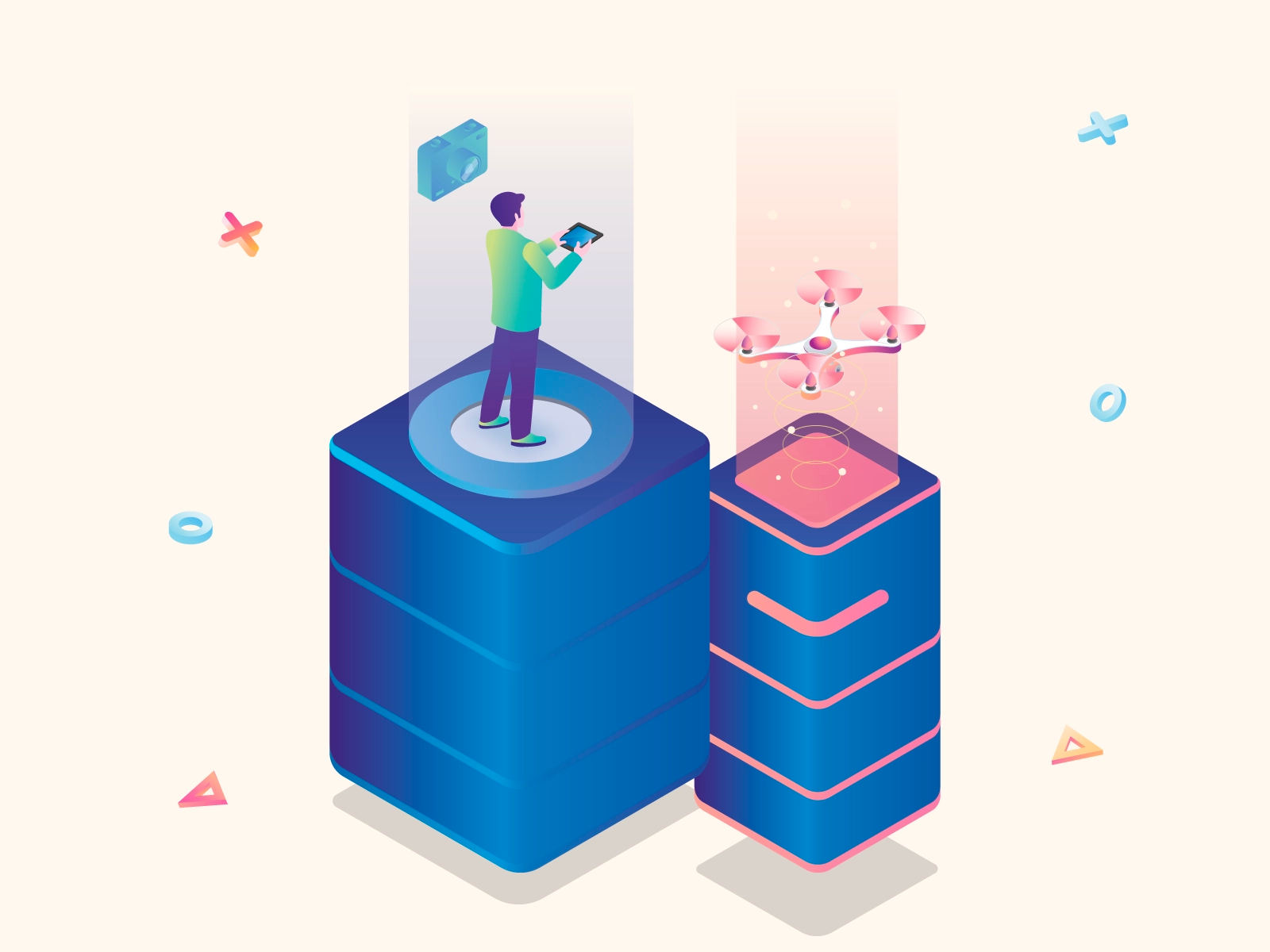
Popular IoT apps are much cheaper to properly link with connected gadgets when you conduct an MVP-building stage.
(image by Julien Clauzier)
Throughout the project’s life cycle, especially in home automation, there’s a place for various adjustments that are much cheaper and faster to implement in MVP than to remake a full-fledged software. Not to mention extra costs spent on handling issues and challenges that may appear through the development. Exactly the MVP stage allows you not to start over the development, thus, letting you avoid unnecessary expenditures and gather more feedback.
For e-scooter application developers, launching with an MVP helps validate core features like scooter tracking, ride reservations, and payment integration to align better with consumers' expectations.
Provide Early Quality Assurance
The most effective strategy for significantly reducing IoT software development costs is to implement QA (Quality Assurance) early in the MVP (Minimum Viable Product) stage, especially during the testing of IoT prototypes. Early QA can reduce bug-fixing costs by up to 50% and cut project timelines by 15–25%.
The later you provide Quality Assurance for your product, the bigger risks are to encounter bugs and unexpected challenges at the further development stages. For example, identifying a connectivity issue in a prototype phase may cost $1,000 to resolve, but the same issue in production could cost upwards of $10,000.
On the contrary, early QA allows to foresee and prevent a great number of such issues that could drastically slow progress and hit with excessive financial expenditures.
Use this approach when:
- When building applications with significant real-time functionality (e.g., factory automation applications).
- When building applications that connect multiple IoT devices that require high interoperability.
Scenario | Impact on Cost | Estimated Savings |
|---|---|---|
Late QA IoT implementation | Major bugs in final stages require overhaul | +25–50% bug-fixing cost |
Early QA IoT implementation | Early issue resolution, smoother progress | Saves $10,000–$20,000 |
Initial Cross-Platform Development
As we’ve already mentioned in previous sections, it’s crucial to understand what platforms you are targeting first. Basically, the more platforms you need to cover, the higher IoT application development costs you should expect. However, in case you’ve already determined beforehand that you’re going for more than one of them — there’s a way to reduce the costs.
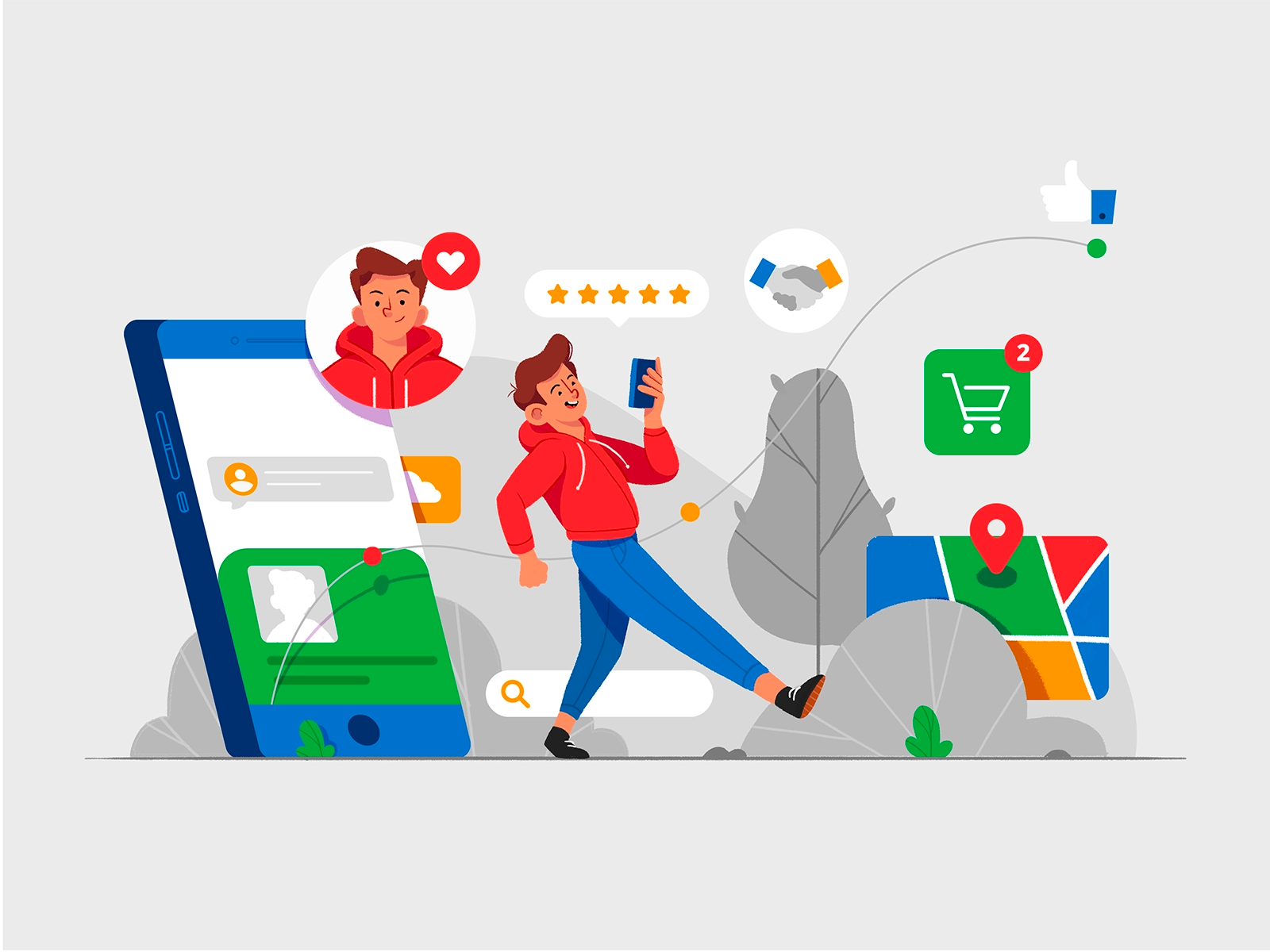
Some programming languages, such as React Native, allow a cross-platform mobile app development for your IoT technology.
(image by Lily)
In fact, considering initial cross-platform development, guided by skilled engineers, allows you not only to reduce the IoT platform development cost but also significantly lower the costs to maintain and modify software for your project, highlighting the benefits of a unified development approach. Using technologies like React Native can reduce development time by 30–40% and maintenance costs by up to 50%.
Use cross-platform development when:
- Your project needs to target both iPhone and Android, and its features need to be nearly equivalent.
- Due to financial constraints, you can only use low-cost solutions and still retain all significant features.
Scenario | Impact on Cost | Estimated Savings |
|---|---|---|
Native development for each OS | Separate IoT experts needed, higher maintenance cost | +50–100% development cost |
Cross-platform dev (e.g., React) | Single codebase reduces complexity and overhead | Saves $25,000–$70,000 |
We recommend finding a team that specializes in the IoT app development process using a specific Tech Stack. For example, if your goal is to create a companion app for both iOS and Android, React Native developers are the best partners for you. As it allows to create a common codebase for both platforms, making the development and maintenance much easier.
🔑 Our Expertise in Determining Development Costs for IoT
As an IoT mobile app development company, we can say that calculating the exact cost of developing an Internet of Things application is very challenging. Each application is unique in its own way, but there are several key features that are taken into account when calculating the cost for any application.
Here, we have compiled the main stages of the IoT app development cycle with an approximate calculation of the time and cost involved:
⚙️ Feature | 📖 Description | ⏳ Min Hours / Cost | ⏱ Max Hours / Cost |
|---|---|---|---|
🔎 Research of Data Protocol | Researching the best match in terms of data protocol for your tech & business needs, including machine learning algorithms | 15 hr / $900 | 25 hr / $1500 |
📲 IoT Device Connection | Establishing a connection between a microcontroller module and a smartphone via BLE, Cellular Network, wireless connectivity, or Serial Data | 120 hr / $7200 | 180 hr / $10800 |
⚙️ Reverse Engineering | In case the protocol description is not 100% accurate | 40 hr / $2400 | 60 hr / $3600 |
📚 Collection | Collecting essential data (such as input from RFID tags or smart sensors) from the device | 24 hr / $1440 | 60 hr / $3600 |
🔄 Processing | Processing and structuring collected data from the device | 48 hr / $2880 | 64 hr / $3840 |
💼 Storing | Setting up or finding a storage for all the data we process | 32 hr / $1920 | 40 hr / $2400 |
📊 Visualization | Creating a convenient way for structured data presentation | 60 hr / $3600 | 100 hr / $6000 |
💻 IoT Multiple Device Management | Establishing a multiple connections for devices (if needed) | 20 hr / $1200 | 60 hr / $3600 |
🛠 Quality assurance | Catching all the unforeseen bugs | 40 hr / $2400 | 60 hr / $3600 |
As it comes from the table above, the approximate IoT mobile app development time (core functionality, to be more specific) varies from 569 to 829 hours. Given an average charge rate of $40-60 per hour, we managed to estimate the highest possible costs for every development stage. Keep in mind that our estimates are based on the experience we had working among the Central and Eastern European companies. However, the rates for delivering a product of the same quality will probably be higher if your development partner is from Western European and North American regions.
Generally, it depends on the number of desired features and the complexity of a project. However, regardless of the complexity, we at Stormotion love being partners in crime for developing IoT-based mobile apps, even when certain features make the process more expensive, as it’s always a unique and unforgettable experience.
Get a detailed estimate of your Project by the Stormotion Team!
Contact Us
There is another thing we may recommend from our expertise. To save your time and budget, always send your custom device to the team you hire for IoT application development, especially if it involves hardware experts for module optimization. We at Stromotion worked on creating a companion app for an IoT system when the developer didn’t manage to deliver an IoT module to our office. As a result, our team had to spend more than 50 extra hours on the development, establishing the best connectivity level without the device being physically present. Thus, extra time wasted on the development also turned into excessive expenditures according to our charge rates from that period.
On the other hand, our latest project Norsk Guardian is an example of IoT application development, when we had the device in our office before the project started. Norsk Lithium develops batteries for outdoor activities such as open-water fishing, ice fishing, and camping, with a focus on extended battery life. They also are of a great use as accumulators and portable chargers for your accessoires. 7 people from Stormotion Team were involved and managed to deliver a full-fledged IoT app in about 30 weeks of work.

Provide your Tech Partner with devices they develop software for — it will help with testing and QA (shots from the Norsk app)
The biggest time-saver for this project was obviously the fact that we had those boat batteries present in our office. This allowed us to spend less time on connectivity and testing stages, along with making it less damaging for Norsk Lithium’s budget for this project. Eventually, the Norsk app is now on the showcase of Stormotion’s successful IoT projects, having provided both quality design and usability for Norsk’s customers.
There’s no better way to share the impact than through the client’s perspective — here’s their view on our cooperation 👇
💡 Takeaways
To sum up, estimating the IoT app development cost for projects is generally challenging. The more ideas and features you want in your product, the higher expenditures you should expect.
Many factors from targeted platforms to user interface design impact the final costs, so it depends on your priorities. If you aim to create full-fledged software with every single feature that you could think of along with an outstanding design, get ready to spend a lot. On the other hand, if your priorities are the development speed and minimalistic design with the core functionality, the development will cost significantly lower.
If you have any questions or need assistance from an IoT software development company in creating quality software for your IoT solution, or if you're wondering how much it costs to build an IoT application, let us know. We will be happy to help you meet your business needs with an outstanding product!
Our clients say
![Stormotion client Max Scheidlock, Product Manager from [object Object]](/static/33294af91c38256bcd5a780ddc41861a/b0e74/max.png)
They understand what it takes to be a great service provider, prioritizing our success over money. I think their approach to addressing ambiguity is their biggest strength. It definitely sets them apart from other remote developers.
Max Scheidlock, Product Manager
HUMANOO
Was it helpful?
Questions you may have
Take a look at how we solve challenges to meet project requirements
Are there any ongoing maintenance or support costs after the initial development?
Yes, operating costs appear when the IoT solution starts functioning, which includes software licenses and establishing cloud hosting. These are considered as “operating” costs.
Can you provide a breakdown of the cost components, such as hardware, software development, testing, and deployment?
The cost structure for IoT integrations includes production costs (hardware components and factory costs), development costs (custom software creation, researching data protocols), and operating costs (software licenses, cloud hosting).
Do you charge on an hourly basis, fixed project cost, or another pricing model?
An IoT application development costs depend on various factors and are typically estimated based on hourly rates of IoT developers, platforms, and interconnected devices. However, for specific pricing models, it's best to contact us directly.
Are there any additional expenses I should be aware of, such as licensing fees or cloud service costs?
Yes, third-party services required for project development, like Firebase, Hygraph, and DigitalOcean, come with their own monthly/annual costs that should be considered in the budget.
How do you handle changes in project scope, and how would those impact the overall cost?
Changes in the project scope have a minimal impact on our work, as we pay special attention to important stages in the IoT application development: Project Discovery Stage and MVP development. It helps to manage changes efficiently and avoid unnecessary expenditures.
Can you provide a timeline for the development process, including key milestones and delivery dates?
A detailed project timeline, including key milestones and delivery dates, would depend on the project's complexity and scope. For example, Norsk Guardian involved 7 people and took about 30 weeks of work.
What factors might lead to cost overruns, and how are they addressed?
Factors leading to cost overruns include inadequate planning, excessive feature inclusion, and unexpected technical challenges. Early Quality Assurance and starting with an MVP can help address these issues.
Are there any potential cost-saving measures or alternative solutions that we should consider?
Cost-saving measures include conducting a proper Project Discovery Stage, starting development with an MVP, early Quality Assurance, and considering initial cross-platform development.
Do you offer different pricing options or packages based on the level of complexity or features required?
The costs vary based on the project's complexity and desired features. Contact us for tailored pricing options.
Will there be any recurring costs associated with data storage, bandwidth, or third-party integrations?
Yes, there will be recurring costs for services like cloud-based platforms, data management, and third-party integrations, which are essential for the operation of IoT solutions.
How do you handle unexpected technical challenges or issues that may arise during development?
As an IoT app development company, we emphasize the importance of early Quality Assurance to foresee and prevent many issues. This approach helps manage unexpected challenges effectively.
Can you clarify any hidden or miscellaneous costs that might not be immediately apparent?
Hidden costs can include expenditures on third-party services required for project development, such as platforms for managing databases and cloud computing.
Are there any long-term cost considerations, such as future updates, scalability, or security enhancements?
Long-term cost considerations include future updates, scalability of the IoT solution, and ongoing security enhancements, which are crucial for maintaining the functionality and security of IoT applications.
Are there any cost-saving opportunities through open-source software or existing IoT frameworks?
You can implement existing libraries and features to lower expenditures. Using open-source software or existing IoT frameworks can be a cost-saving opportunity too.
Read also

